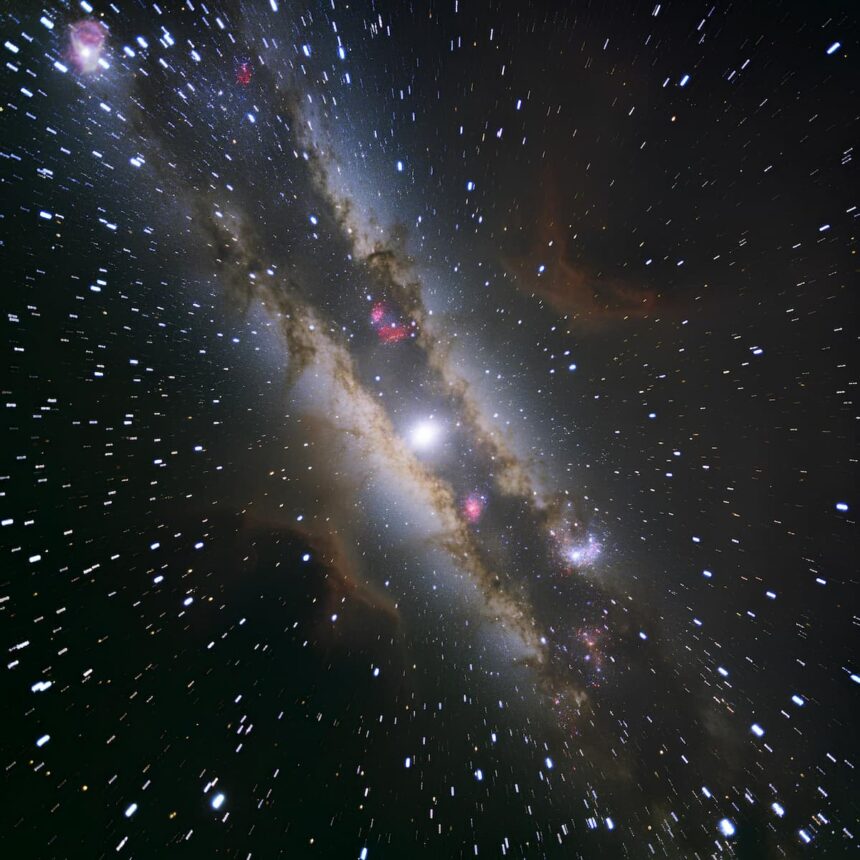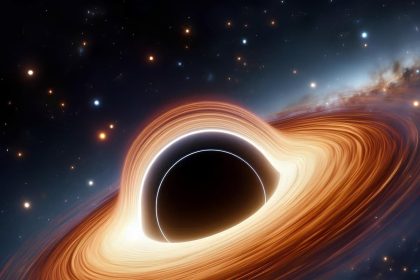Earth’s Gravity is Weaker than Your Fridge Magnet
There are four so-called fundamental forces in the universe: the strong nuclear force, which ensures the stability of atomic nuclei; the weak nuclear force, responsible for radioactive decay; the electromagnetic force; and our beloved gravity. The latter is what holds Earth, other planets, stars, solar systems, and galaxies from falling apart.
However, gravity is the weakest of all the fundamental forces. And scientists still don’t fully understand why.
You might say, but gravity drives the movement of stars, galaxies, and other massive objects—how can it be weak? Well, put a magnet on your fridge. Now ask yourself why a tiny fridge magnet attracts more strongly than the entire planet.
And the weak and strong nuclear forces are even more powerful than electromagnetic forces. At least you can remove a magnet from the fridge with your bare hands, but splitting atoms with your hands is beyond human capability. For comparison, the electric force between an electron and a proton within an atom is approximately one quintillion (that’s a one followed by 30 zeros) times stronger than the gravitational attraction between them.
This is one of the major mysteries in physics. Scientists theorize that the universe might have additional dimensions hidden from our perception. Gravity could be spreading across all of these, while electromagnetic, strong, and weak nuclear forces remain confined to our four-dimensional space-time.
It’s even possible that our gravity affects objects in other universes, if they exist. In turn, their gravitational pull might influence our objects.
This could explain why our universe is expanding faster than expected. At least, that’s a theory proposed by physicists who don’t favor the concept of dark matter and energy.
Despite these theories, there is currently no experimental evidence to confirm or refute them.
Gravity Creates Waves
Imagine space-time as a stretched fabric, or the surface of a pond if you prefer. When massive objects like black holes move or neutron stars merge, they create distortions in space-time—similar to folds in fabric or waves rippling out when a stone falls into a pond. That’s more or less what gravitational waves look like.
These analogies are somewhat strained because both fabric and the pond surface are flat, while the universe is three-dimensional. Still, scientists haven’t come up with better examples.
Gravitational waves are different from sound or light waves, so we cannot hear or see them. However, using special instruments called laser interferometers, scientists can detect them. This allows researchers to study distant massive objects and cosmic events happening in the farthest corners of the universe.
Albert Einstein predicted the existence of gravitational waves a century ago.
But only recently has humanity developed tools to detect them. One such instrument is the Laser Interferometer Gravitational-Wave Observatory (LIGO). In 2015, it recorded gravitational waves for the first time, coming from the merger of two black holes about 1.3 billion light-years from Earth.
These waves pass through all obstacles, including empty space, and are not absorbed or reflected. They also travel across the universe at the speed of light.
Earth’s Gravity is Not Uniform
You’ve probably seen this animation. There’s a myth online claiming this is what Earth looks like without its oceans.
But in reality, this model shows Earth’s gravitational field, not the planet itself.
You see, gravity is stronger where there is more mass. And Earth’s gravitational field is uneven for several reasons. First, our planet is not a perfect sphere. It’s slightly flattened at the poles and bulging at the equator, leading to an uneven distribution of mass.
Second, Earth’s surface is quite irregular. We have tall mountains, deep ocean trenches, and other landforms with varying masses. Third, the materials within the planet are also unevenly distributed. All these factors result in gravity varying from place to place on Earth.
This means that in different locations on our planet, you will weigh differently.
For example, if you’re in Colombo, Sri Lanka, your weight will be slightly less than if you were in Kathmandu, Nepal.
The Indian Ocean is one of the regions with the lowest relative gravity in the world, whereas the heavy Himalayas increase it.
Another example: for a long time, scientists couldn’t understand why gravity in the region around Hudson Bay in Canada is weaker than it theoretically should be. It turned out that ancient glaciers there are melting, reducing their mass and therefore the gravitational force.
So, if you’re not happy with the number on your scale, just move to a different location, and you might lose a kilogram or two right away. Of course, your mass will remain the same, but your weight will decrease. Physics.
Gravity Bends Light

It’s easy to observe how gravity affects physical objects. Thanks to it, we stand firmly on Earth instead of floating off into space, apples fall downward, the sun revolves around the center of the galaxy, and so on.
However, this force influences not only matter but also light. This is why black holes are called such: their gravitational pull is so powerful that all the light they attract cannot escape their gravitational field.
But sometimes photons don’t fall into the massive object; they simply pass by, slightly changing their trajectory.
This phenomenon is known as gravitational lensing. It occurs because gravity distorts space and time around massive objects like stars and galaxies.
As a result, light passing by these massive objects follows a curved path instead of a straight line.
Gravitational lensing was first predicted by Albert Einstein in his general theory of relativity. He hypothesized that light from a distant object would bend as it passed by a massive star closer to us. His theory was experimentally confirmed during the solar eclipse of 1919.
Gravitational lensing can create impressive effects, such as “Einstein rings” or “Einstein cross,” when light from a distant galaxy bends around a closer one, forming rings, arcs, and other light shapes.
This phenomenon is also used by astronomers to study dark matter. Since dark matter doesn’t emit light, it cannot be directly observed. However, we can detect its presence through the effects of gravitational lensing.
Weightlessness is Not the Absence of Gravity
If you ask a random person why astronauts float in the air on the ISS, they would most likely say it’s because there’s no gravity in space. This, of course, is incorrect; otherwise, how could the Sun keep planets in orbit?
Here’s why that statement is wrong. Imagine you are on a plane, and it suddenly starts to dive. If you throw a ball into the air at that moment, it will obviously fall. However, since the plane is also descending, it will seem to you as though the ball is floating in the air. This is the state of weightlessness. Incidentally, astronauts practice for space flights in diving planes to adapt to this.
NASA staff humorously call these training planes “Vomit Comet.” You can guess why.
The same thing happens to astronauts in orbit. A spacecraft or station is constantly being pulled toward Earth due to gravity. But since they are moving forward fast enough, they never fall but instead continue circling the planet on every orbit. This creates the illusion of zero gravity, although it is more accurate to call this state “microgravity.”
In reality, all of space is permeated by gravity, and there is no place in the universe where it doesn’t exist. Scientists believe that although its speed of propagation is limited by the speed of light, and its strength diminishes quickly with distance from the source, its range is infinite.
So right now, you’re being affected by gravitational waves from some black hole that takes tens of thousands of years to reach Earth. It’s just that their strength is minuscule compared to Earth’s gravity. And that’s a good thing, you know.



